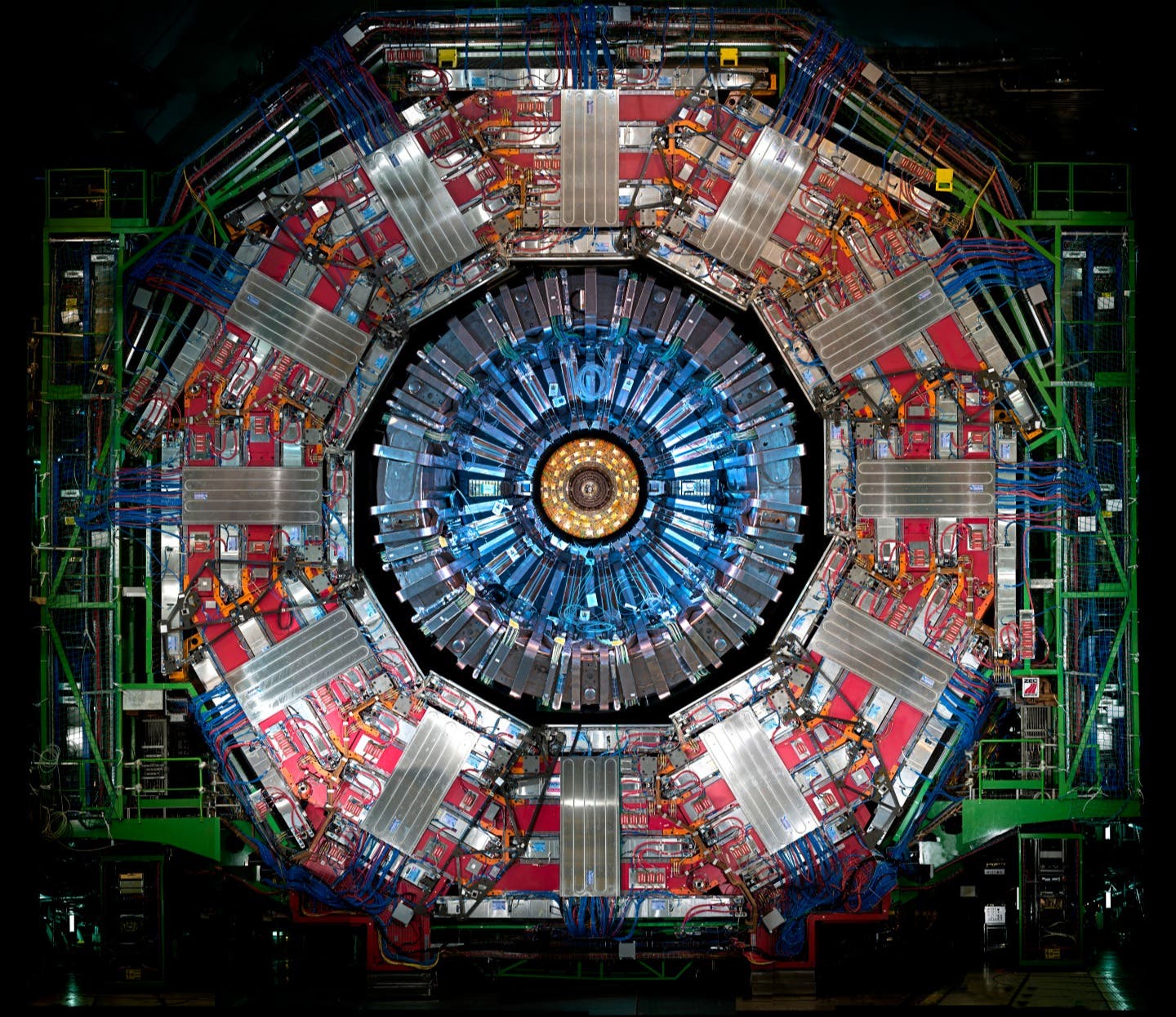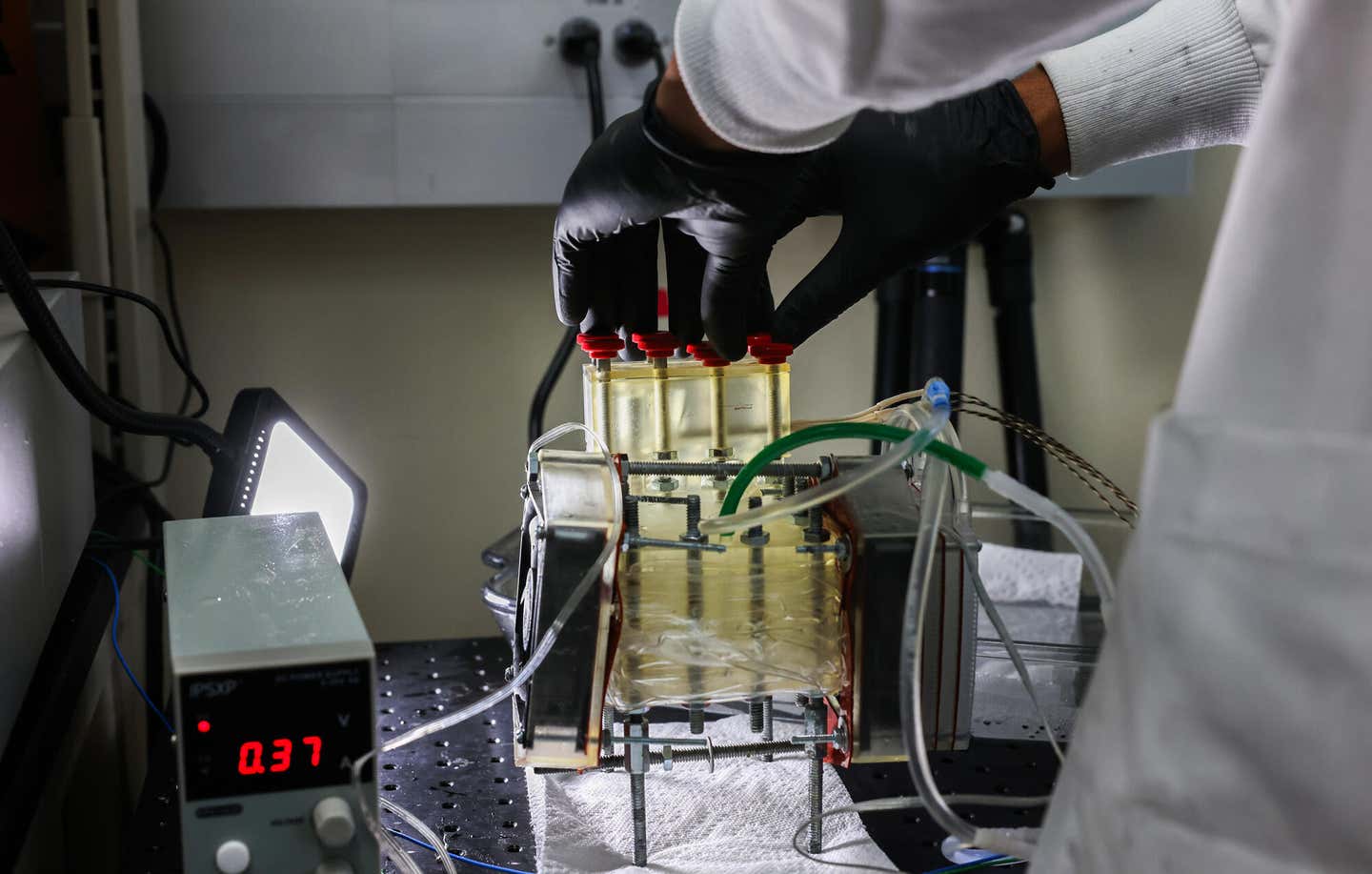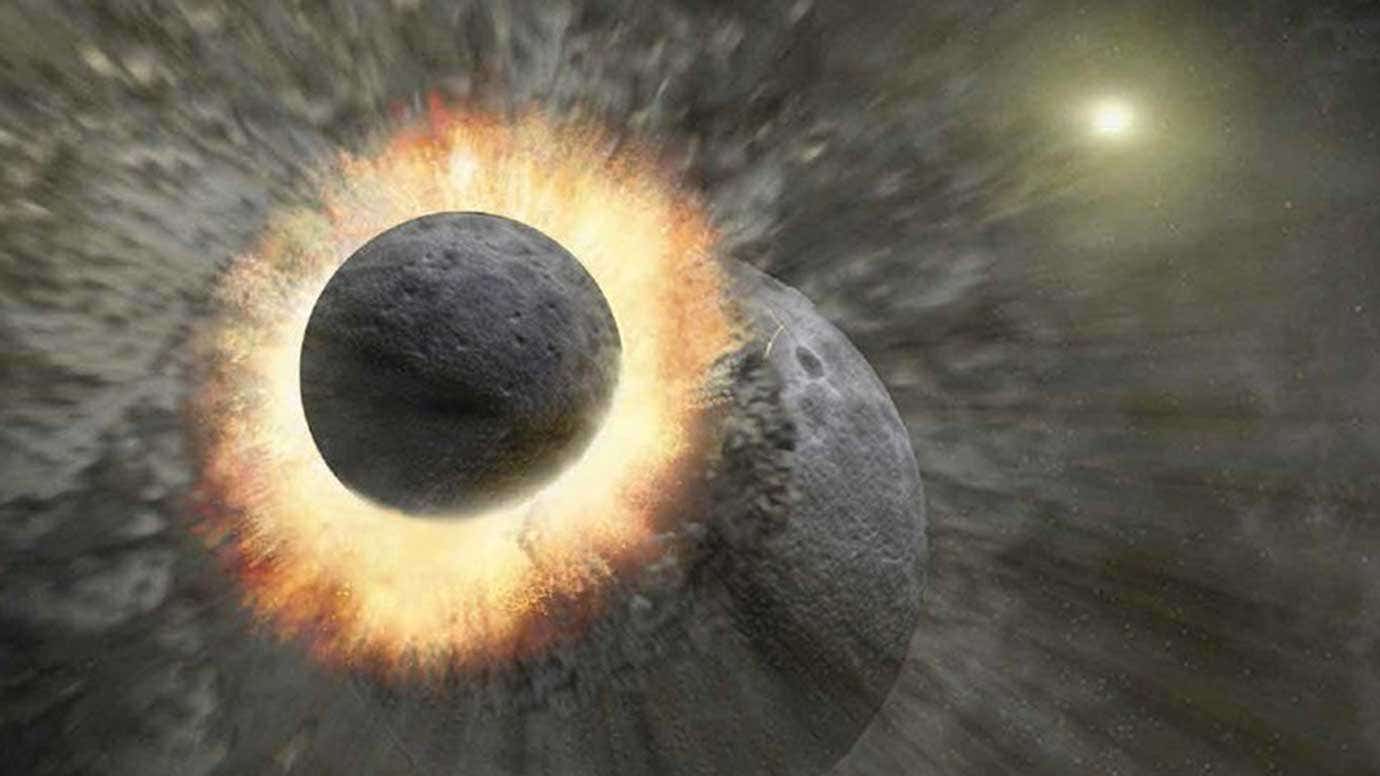Groundbreaking study reaffirms Einstein’s General Theory of Relativity
This achievement not only enhances our understanding of the Universe but also answers questions that have puzzled scientists for decades.

[Sept. 30, 2023: JJ Shavit, The Brighter Side of News]
Antiprotons from the CERN Antiproton Decelerator30 and the ELENA (Extra Low ENergy Antiproton)31 ring are first caught in a separate, high voltage Penning trap. (CREDIT: CERN)
In a groundbreaking discovery, the existence of gravity between antimatter and Earth has been demonstrated by scientists, further reinforcing the foundation of Albert Einstein’s iconic General Theory of Relativity.
This achievement not only enhances our understanding of the Universe but also answers questions that have puzzled scientists for decades.
Historical records suggest that Sir Isaac Newton, the pioneer behind the theory of gravity, may have been inspired by a simple event: an apple falling from a tree. This unassuming fruit led him to question the fundamental forces that govern our world. In similar contemplative spirit, scientists have long pondered: what if the apple was made of antimatter, often referred to as the “anti-apple” in scientific circles? Would it behave the same way?
Inside the ALPHA experiment facility at CERN, where physicists can make antihydrogen. (CREDIT: Maximilien Brice CERN)
Before diving into this paradigm-shifting experiment, it's crucial to understand the basics. Matter, as commonly defined, is anything with mass that occupies space. This can be liquids like water, solids like rocks, or gases such as the air we breathe. Antimatter, on the other hand, is essentially the mirror image of matter. While matter consists of particles like electrons, antimatter comprises their opposites, such as positrons (or antielectrons).
Curiously, despite matter being omnipresent in our universe, its counterpart – antimatter – has proven elusive. This is puzzling given that both matter and antimatter were supposedly produced in equal measure during the Universe's infancy.
This enigma, in part, is what the ALPHA collaboration at CERN’s Antimatter Factory, with contributions from scholars at The University of Manchester, sought to unravel.
Related Stories
The results of their research, unveiled in today's issue of the esteemed journal Nature, reveal that antihydrogen atoms (a type of antimatter) are influenced by Earth’s gravity in the same manner as regular matter.
Dr. William Bertsche, a notable figure in the Accelerator Physics group at The University of Manchester and a Deputy Spokesperson for the collaboration, shed light on the significance of these findings. “Einstein's General Theory of Relativity, a doctrine well over a century old, is a beacon in our understanding of gravity. Our experiment unequivocally showcases that this theory is applicable to antimatter as well," he said.
Bertsche further emphasized, “Delving deep into how gravity interacts with antimatter not only unlocks mysteries about antimatter itself but also the enigmatic nature of gravity. Despite its prominence, gravity remains an outlier, not fitting seamlessly with other dominant theories, particularly quantum mechanics. By juxtaposing the behavior of antimatter and matter, we hope to glean insights that bring us closer to unifying these disparate theories."
Cross section of the ALPHA-g apparatus. The full device comprises three antihydrogen trapping regions; only the bottom one is employed here. The MCP detectors are used to image charged particles (e−, e+, p¯p¯) extracted from the Penning traps for diagnostic purposes. (CREDIT: Nature)
Building upon this sentiment, ALPHA spokesperson Jeffrey Hangst noted, “The essence of physics lies in observation. This experiment marks the first direct observation of a gravitational effect influencing the trajectory of antimatter. Despite its scarcity in the observable universe, this discovery brings us one step closer to deciphering the riddle of antimatter."
The mechanics behind the study are equally compelling. Using a refined version of their 2013 ALPHA set-up, the team trapped groups of roughly 100 antihydrogen atoms. These were gradually released over a span of 20 seconds. Computer-generated models predicted that, under the influence of gravity, about 20% of the atoms would exit from the top and 80% from the bottom of the trap. Remarkably, the ALPHA team's findings mirrored these predictions.
The raw event z-distributions are displayed as histograms for each of the bias values, including the ±10g calibration runs. These are uncorrected for background or detector relative efficiency. The time window represented here is 10 s to 20 s of the magnet ramp-down. The z-cut regions are indicated by the solid, diagonal lines. Explicitly, the acceptance regions in z are [−32.8, −12.8] and [12.8, 32.8] cm for the ‘down’ and ‘up’ regions, respectively. (CREDIT: Nature)
Reflecting on this monumental journey, Hangst exclaimed, "Three decades in the making, this has been a rigorous journey. From creating the anti-atom, mastering its containment, to achieving a controlled drop that detects gravitational forces – the journey has been long but rewarding."
Enthusiastically discussing future prospects, Hangst revealed, "The upcoming phase focuses on measuring the rate of acceleration with utmost precision. A pivotal factor will be the laser-cooling of antihydrogen atoms. Our previous experiments, ALPHA-2, laid the groundwork, and we are optimistic that its integration into ALPHA-g in 2024 will bolster the precision of our measurements."
In conclusion, this landmark research stands as a testament to humanity's insatiable curiosity and relentless pursuit of knowledge. As we continue to explore and challenge our understanding of the cosmos, discoveries like these remind us of the boundless potential of science and the ever-evolving nature of truth.
For more science and technology stories check out our New Discoveries section at The Brighter Side of News.
Note: Materials provided above by The Brighter Side of News. Content may be edited for style and length.
Like these kind of feel good stories? Get the Brighter Side of News' newsletter.
Joseph Shavit
Head Science News Writer | Communicating Innovation & Discovery
Based in Los Angeles, Joseph Shavit is an accomplished science journalist, head science news writer and co-founder at The Brighter Side of News, where he translates cutting-edge discoveries into compelling stories for a broad audience. With a strong background spanning science, business, product management, media leadership, and entrepreneurship, Joseph brings a unique perspective to science communication. His expertise allows him to uncover the intersection of technological advancements and market potential, shedding light on how groundbreaking research evolves into transformative products and industries.



